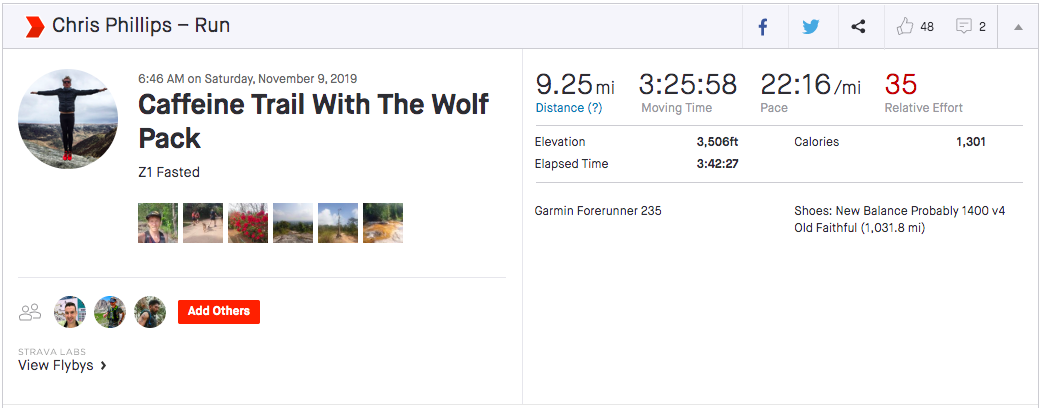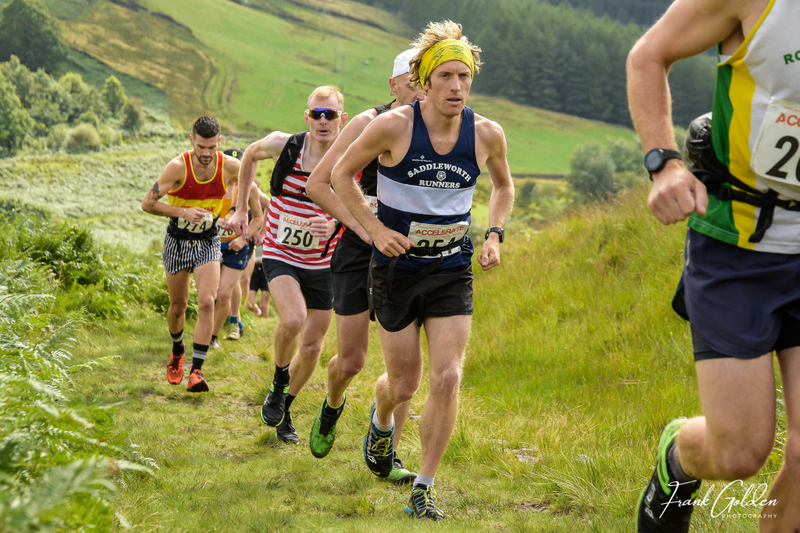Fasted Training For Distance Runners
21-11-2019
Fasted training could improve your speed at all intensities. Why? How? Read on.
I have been advocating fasted training to friends for years. A good cyclist friend first introduced it to me, and over time I have incorporated it into my running too.
It's been interesting to see it gain more traction, including a section in Training For The Uphill Athlete, coauthored by Kilian Jornet.
It has been a key aspect of my improving my ability to hold faster paces for longer in races.
Fasted training reduces the body's reliance on glycogen (sugar) and improves its ability to use fat. This has the simultaneous effect of giving us more horsepower AND endurance capacity.
Fasted Training, Fat Burning And Metabolism
The key reason to train in a fasted state is to improve our ability to burn fat.
There are two fuel sources that our bodies can use to create energy to power our muscles. Glycogen and fat.
Fat trumps glycogen with two main bodily adaptations:
- Quantity In The Body
We can hold approximately 2000 calories of available glycogen in our bodies.
Our fat stores are virtually limitless, with 100,000 calories of intramuscular fat.
- Reduced Lactate Production
As we exercise at higher intensities, at and above lactate threshold, our cells accumulate lactate.
On a very basic level, lactate causes us to experience fatigue as we are unable to remove it from our bodies in higher quantities.
Utilising fat at higher intensities reduces the level of lactate in the blood, meaning increased stamina and lower perceived exertion.
The Fasted, Fat Adapted Athlete
What does this mean in real terms for an athlete who is fat adapted?
The major improvement comes from having an additional source of endless fuel for running. For all distances the athlete can rely on their adapted fat stores.
This minimises potential disruption in races due to running out of fuel. You can take less food and have less GI issues as you race, knowing that you can rely on your fat burning engine.
Training also becomes much easier to manage. Not having to take food on longer runs up to 3 hours gives you the ability to go fast and light.
One of the biggest changes is actually increasing your aerobic threshold. You are able to burn fat rather than sugar at higher intensities. As burning fat produces less lactate, your lactate threshold pace increases. Your body doesn't have to clear as much lactate when you're running faster.
Being fat adapted can be life changing. As you are more able to burn fat in general life, you will not need to eat sugar foods to keep your energy levels high. It's been a surprising change for me to actually eat LESS food in daily life due to my fasted training runs. I've simply got enough fat to sustain me between meals, so I don't need to snack.
Fasted Training Is A Shortcut For Fat Burning, Not The Only Way
Training in lower intensity zones, like this article I wrote about Zone 2 training, will provide a stimulus for burning fat without fasting. If you do a high volume of low intensity training, your metabolism will change.
But it won't be as fast. Our body likes to run on sugar. It's easier to access and produce energy from.
That means we have to trick our body and provide an extra stimulus to enhance our ability to burn fat. The best way of doing this is to deplete our glycogen levels with fasted training.
Doing long training sessions over 2 hours at low intensity whilst fasted will deplete our glycogen levels and create a cellular environment ripe for fat burning.
Using Fat At Higher Intensities
It was traditionally believed that burning fat was useful at only lower intensities.
New studies have shown that in a fat adapted athlete, the usage of fat even at Lactate Threshold and higher can be double than in an athlete that is not adapted.
As the writers of Training For The Uphill Athlete beautifully put:
"To put this correction in perspective, that's like increasing your car's horsepower and its fuel economy at the same time!"
This means that it's not just the long slow distance ultra runner that can benefit from fasted training.
It's also of huge benefit to a 10k track runner.
How To Train While Fasted?
The simplest way to do it is to do your training in the morning whilst skipping breakfast.
If you eat the night before at 6pm, you could have a 12 hour time window without consuming food.
Interestingly enough, according to Rhonda Patrick (highly recommend her podcast FoundMyFitness), caffeine does not affect our fasted environment. That means a black coffee without sugar is perfectly OK to have to get your body moving in the morning.
You must train at a low intensity to gain these adaptations to begin with. It's a process that will take time and you will need to get used to going slower for longer sessions. Over time your ability to run at lower intensities will improve as you adapt to burn more fat for fuel.
I highly recommend wearing a heart rate monitor to analyse this change over time. You will see that for the same heart rate you will be running longer and at faster paces in your easier zones.

It's important that you start slowly and build up the amount of fasted training time you have in your weekly schedule. To begin with, try a fasted run 60 - 90 minutes long. Then build up to 2 hours and above. By slowly increasing your duration, you will support your body to adapt its metabolism for longer runs.
What can I expect?
It's hard to begin with! A fasted run longer than 90 minutes is going to make you feel weak if you are not already fat adapted. There may be times when you feel like your legs are heavy and you have no energy at all. You may experience the "bonk" if you do too much of it too soon. This is when your body runs out of glycogen and you are unable to think clearly and struggle to put one foot in front of the other.
Build up slowly and you will start to feel stronger over these longer durations. Your body will then start using more fat for fuel.
You will need to eat less on longer runs and races.
Tempo and threshold workouts will be faster.
You will be using a mixture of fat and sugar to perform at faster paces, it will feel easier.
Race times should improve, especially longer races over 2 hours in length. You will still be eating in these races but you will have an extra energy source to rely on to boost your performance.
Cross Training And Fat Burning
Metabolic changes occur despite the type of training you are doing.
The important thing is fasted, low intensity, exercise. Cross training on the bike, in the pool, or hiking big hills can all contribute to this.
It's always best to be specific for your sport to stress the correct muscle groups but metabolic stresses and exercise intensity apply across the board.
If you are only beginning on your journey of lower intensity running, cross training can absolutely support the metabolic change. As you get more specific in your training, it has to be said that nothing can beat running at lower intensities to adapt the correct muscles to run on lower glycogen levels.
My Experience
For the past year I have focused on building my aerobic capacity after 2 years of time off training.
I have incorporated fasted long runs (2 - 3 hours) and fasted long rides (3 - 4 hours) into my schedule.
These have been done early in the morning, enabling me to be in a glycogen depleted state.
Usually I start the morning with coffee. I still take some food just in case of an emergency or some poor navigation (happens sometimes 😄 ).
My aerobic pace on the flats has dropped from 9:00 minute miles to sub 7:00 minute miles in 10 months.
My recovery is so much better as I'm not taking in lots of sugars and experiencing the highs and lows of the sugar rush.
I must say that this is not only due to fasted training. The high volume low intensity approach has obviously had a large impact.
Combining low intensity with fasted training has turbo charged my adaptation and increased my aerobic capacity further than I ever could have hoped.
Postscript: The Fat Burning Zone, Altered States Of Consciousness
Rupert Sheldrake believes that fasting is one of the ten ways to experience altered states of consciousness.
I must admit that after 2 hours of low intensity exercise, you enter the 'fat burning zone'.
It's a type of flow state, where you are concentrated with absolute attention on what you are doing.
Time can seem to slow down, there is more clarity, and you can trust in the process of training.
It's a very unique experience, and one which gives you more focus and attention in your daily life too.
Your body is working in a fundamentally different way using different metabolic processes.
It's unique, and I can highly recommend it. 😄



